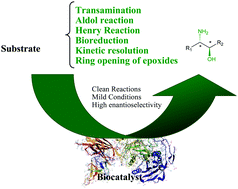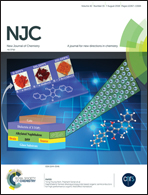Biocatalytic approaches towards the stereoselective synthesis of vicinal amino alcohols
Abstract
The global need for clean manufacturing technologies and the management of hazardous chemicals and waste present new research challenges to both chemistry and biotechnology, despite tremendous advances which have been accomplished by developing cheaper and more versatile chemical catalysts as well as optimizing the reaction media. Recent advances in biocatalysis, fueled either by protein engineering or by screening, have greatly improved the number of synthetic opportunities from small chiral polyfunctional molecules to highly complex analogs. Chiral 1,2-amino alcohols are the vital structural components of a large number of biologically active molecules with potential pharmaceutical relevance and in chiral auxiliaries. Also the understanding of enzymatic mechanisms and the combination of several (bio)catalysts in a one-pot or stepwise fashion experiences dramatic progress in chemical synthesis. In this comprehensive report, we seek to provide an overview of recent (chemo)enzymatic methods, focusing on the strategy employed (use of transaminases, kinetic resolution, dynamic kinetic resolution, biocatalytic C–C bond formation or enantioconvergent processes) and the type of biocatalyst(s) used for the preparation of enantiopure vicinal amino alcohols.



 Please wait while we load your content...
Please wait while we load your content...